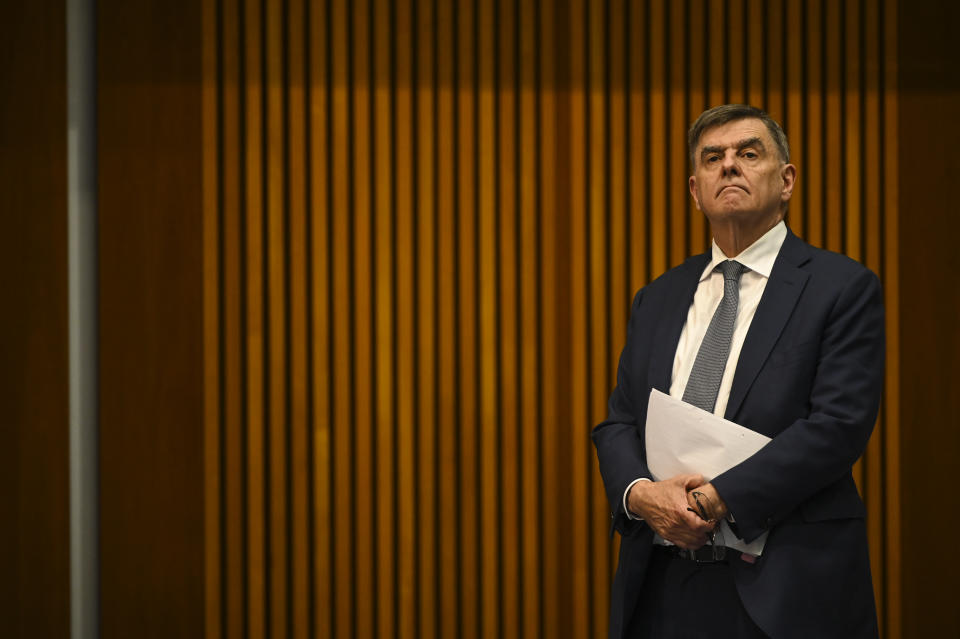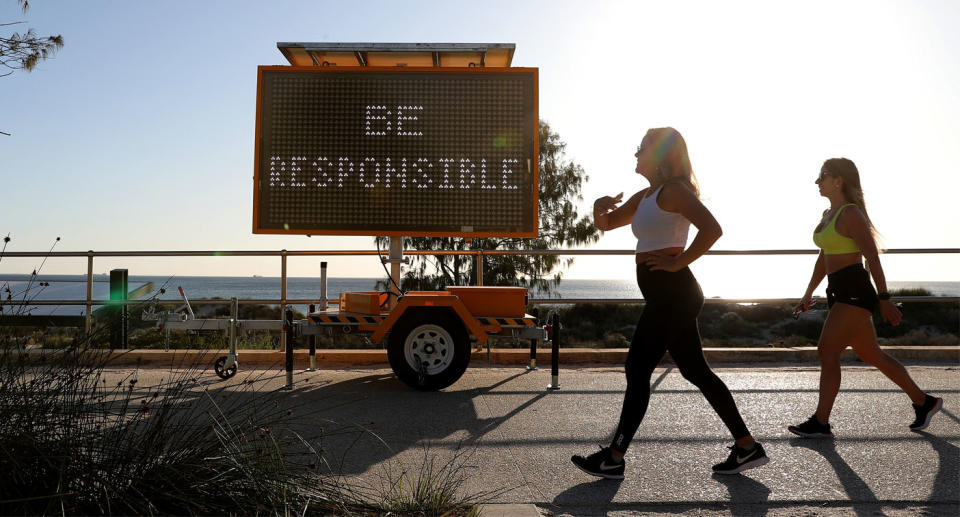Chief medical officer reveals important detail on how restrictions will be eased
Yahoo News Australia's Life After Lockdown series investigates what life will be like after coronavirus restrictions.
While Australia eagerly awaits the findings of the National Cabinet meeting this Friday, Chief Medical Officer Brendan Murphy has warned any easing of coronavirus restrictions need to be done in a “slow” and “cautious” manner.
Last Friday, Scott Morrison announced the government would be bringing its decision on relaxing restrictions forward by three days due to the hard work the country had done so far amid the pandemic.
"Australians have earned an early mark,” the Prime Minister said.
Yet that ‘early mark’ Mr Morrison speaks of would be the beginning of a long and thorough process that would last months as the National Cabinet and the government’s health experts carefully analyse the effects of each change, with the first earmarked for next Monday.
"Although we are now seriously looking at what measures could be relaxed... we are very cautious about the need to move slowly," Professor Murphy said on Sunday.

“We are, as we've said on many, many occasions, in a much better position than just about any other country in the world, but we have to be very careful as we chart the next few months of returning our society to as much normality as we can safely do.”
Cautious approach needed to avoid ‘second wave’
Prof Murphy said each restriction change would need to be in place for several weeks before any consideration of the next change.
Dr James Trauer, from Monash University’s Epidemiological Modelling Unit, believes such a move is to avoid the dreaded “second wave” that has been so highly publicised.
“If we were to lift lockdown and go back to what we were doing last year we are faced with exponential spread as long as we haven’t completely eliminated it,” he previously told Yahoo News Australia.
Deputy Chief Medical Officer Paul Kelly recently said Australia is a “victim of our own success”, suggesting the strong work we’d done so far had meant the country’s population has been largely saved from COVID-19, meaning the concept of herd immunity is basically non-existent.
Therefore moving forward, Australia must act more cautiously than countries that have had widespread outbreaks such as Spain and Italy who have a population where the virus has freely spread through communities.
To put the scale of the outbreak in Europe into context, recent Oxford University modelling predicted more than half of the UK’s residents may have already been infected by the virus.
Dr Trauer said a step-by-step approach would inevitably increase cases and continuous analysis of exactly how much transmission is generated by the reintroduction of an activity.
“We’ll gradually be lifting some restrictions and seeing how many can be lifted before we see an increase in spread – that’s how I see the suppression approach unfolding,” he said.
“[But] as long as the entire population is susceptible we’re still in a fragile situation.”

What restriction changes can Australia expect?
Speculation has been rife on what changes, if any, will be made come Friday, and when observing the different preferences of state and territory leaders, it’s a difficult task to predict.
Northern Territory Chief Minister Michael Gunner has so far made the most significant move by outlining the territory’s game plan for the coming months, most notably offering a lifeline to the hospitality industry in two weeks time by allowing people to return to pubs and restaurants.
NSW Premier Gladys Berejiklian opted for easing indoor gatherings, while Queensland Premier Annastacia Palaszczuk prioritised family outings and Victoria Premier Daniel Andrews refused to budge.
Western Australian Premier Mark McGowan joined South Australia and the NT in implementing a 10-person gathering rule.
Mr Morrison’s press conferences in the wake of recent National Cabinet meetings have offered an insight into what we might be able to expect.
And on Sunday, Prof Murphy said community sport was in the package of measures being prepared for the National Cabinet.
“[The National Cabinet] were particularly impressed with the Australian Institute of Sport framework for rebooting sport,” he said.
Prof Murphy said while there is “no magic number” on how many people download the government’s coronavirus tracing app, which currently sits at 4.4 million downloads, the higher that number is the more likely the National Cabinet will ease restrictions.
It has widely been reported the government wanted 40 per cent of the adult population to download the app, which Prof Murphy says would allow the government to effectively fulfil one of its three major goals before easing restrictions – efficiently responding to outbreaks as quickly as possible.
“The more confidence [the National Cabinet] have, the more bold they might be,” he said.
If the National Cabinet are confident in state governments’ ability to nullify outbreaks quickly, the current gathering size restriction is likely to be eased and Prof Murphy confirmed it will be put to the National Cabinet this Friday.
Yet Dr Trauer believes under the current suppression strategy, Australia might not be able to “take it that far” and some sort of restrictions will continue to exist until a vaccine, which experts predict may not come until mid 2021, has been rolled out.
Do you have a story tip? Email: newsroomau@yahoonews.com.
You can also follow us on Facebook, Instagram and Twitter and download the Yahoo News app from the App Store or Google Play.






